|
-
29th October 21, 12:51 PM
#11
That explains my A-line Cassock.
Rev'd Father Bill White: Mostly retired Parish Priest & former Elementary Headmaster. Lover of God, dogs, most people, joy, tradition, humour & clarity. Legion Padre, theologian, teacher, philosopher, linguist, encourager of hearts & souls & a firm believer in dignity, decency, & duty. A proud Canadian Sinclair with solid Welsh and other heritage.
-
-
29th October 21, 01:05 PM
#12
An actual A line, or even the illusion of it, is very flattering...
Anne the Pleater.
I presume to dictate to no man what he shall eat or drink or wherewithal he shall be clothed."
-- The Hon. Stuart Ruaidri Erskine, The Kilt & How to Wear It, 1901.
-
-
30th October 21, 04:32 AM
#13
 Originally Posted by Pleater

It might seem I'm being a bit, or more than a bit pedantic, but the shaping of the apron doesn't actually shape the kilt by widening the hemline of the garment below the hips.
The construction of a kilt is a straight tube lower edge to hip which narrows into the waist.
The apron is shaped and wraps around the body so as to look right, but it doesn't make the garment flare out in the way that the panels of an A line skirt behave.
Anne the Pleater
You're absolutely right...
The point I wanted to make with the pictures, was to show there is more to the shaping of the kilt than a simple pleated cone, flaring out fan-like and following an A-line.
However, I am surprised at the number of kilts being seen worn, that appear as if they are made as a pleated cylinder - little or no shaping at the waist - and that require an act of faith to keep them in place.
It seems to me that whilst there are obvious similarities that make 'standard' sizing possible to an acceptable degree, there are plenty of exceptions than prove the rule. A made-to-measure or fully-tailored kilt will always look like what it is, but the off-the-peg seldom does in my view.
-
-
30th October 21, 07:03 AM
#14
 Originally Posted by Troglodyte

I am surprised at the number of kilts being seen worn, that appear as if they are made as a pleated cylinder...
Yes that was my point. I realise that a traditional kilt isn't a strict cone, yet it's clearly not cylindrical, as any photo will show.
The shape of the front upper apron is complex and is done by eye, with the kiltmakers I've seen at work.
Even with a person like me, who IS a cylinder (same waist and hip diameter) my kilts have a nice flair or inverted "V" shape to them.
Proud Mountaineer from the Highlands of West Virginia; son of the Revolution and Civil War; first Europeans on the Guyandotte
-
-
30th October 21, 02:05 PM
#15
Even with the same hip and waist measurement, there is shaping above the hips at the back in order to have the garment narrow into the small of the back around the rump and then whatever is needed for the aprons to fall properly at the front, which may require all sorts of tailoring skills to make it look right.
Anne the Pleater
I presume to dictate to no man what he shall eat or drink or wherewithal he shall be clothed."
-- The Hon. Stuart Ruaidri Erskine, The Kilt & How to Wear It, 1901.
-
The Following User Says 'Aye' to Pleater For This Useful Post:
-
30th October 21, 07:55 PM
#16
Perhaps I can interject from a kiltmakers perspective.
The original post posed a couple of statements about kilts. And then asked questions based on those statements.
"Kilts can go down to anywhere just below the knee to just above the knee."
This is an assumption that does not apply to all kilts or all kilt wearers. While it is not unusual today to see some guys wearing kilts with the bottom, or selvedge edge, worn below the top of the knee cap this is a fairly new thing. This was not a common practice before the advent of guys wearing the waist of a kilt where they are used to wearing their blue jeans.
It is also quite common to hear people say that you adjust where the bottom of the kilt to hit the knee by adjusting where the waist is worn.
In truth it was the Utilikilt company that first began to make kilts designed to be worn like blue jeans. Prior to the Utilikilts all kilts were designed to be worn at the anatomical waist.
The anatomical waist is where the joints in the spine of the human body can naturally bend. To find your anatomical waist put your finger just under your ribs at the side and bend, in, towards your finger. You will feel your finger go into a hollow. That is your anatomical waist. In the back this will be about the level of the kidneys and in front this will 3-4 finger widths below the bottom of the breastbone.
The anatomical waist has nothing to do with the naval as that is on soft tissue and will be in different places on different guys depending on their weight.
Prior to the advent of the Utility Style kilts all kilts were designed and made to fit like men's trousers prior to the common wearing of low rise blue jeans.
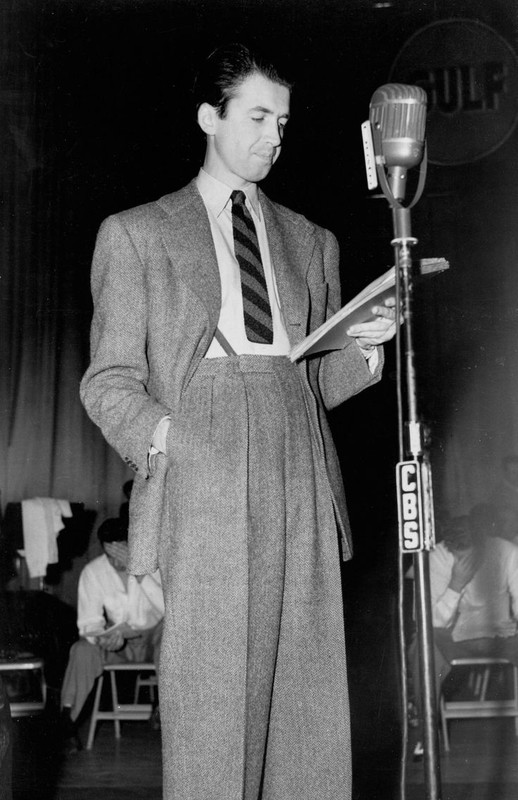
While this style was once the norm, today is it often parodied -
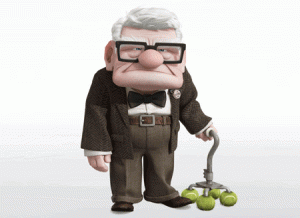
This is the waist style for all kilts designed and constructed in what is commonly called the "traditional" manner. (Including the inexpensive Pakistani kilts)
The "Hillwalker" kilt by Alexis Malcolm, the 21st Century kilts by Howie Nicklesby, My Freedom Kilts, and the Utility Style first popularized by the Utilikilt Co. are some of the exceptions.
Another feature of the "traditional" kilts is the Fell Area. This is the portion in the back where the pleats are tapered from the level of the widest portion of the hips or buttocks up to the anatomical waist. Above the waist there is what is called The Rise where the kilt flares outward to fit over the bottom of the ribs.
The Art of Kiltmaking (TAoK) gives the length of the Fell Area as 1/3 of the length of the kilt from the Selvedge Edge, up to the level of the center of the top strap. (This does not include The Rise so is not the total length of the garment.)
A kilt maker breaks a kilt down into four sections.
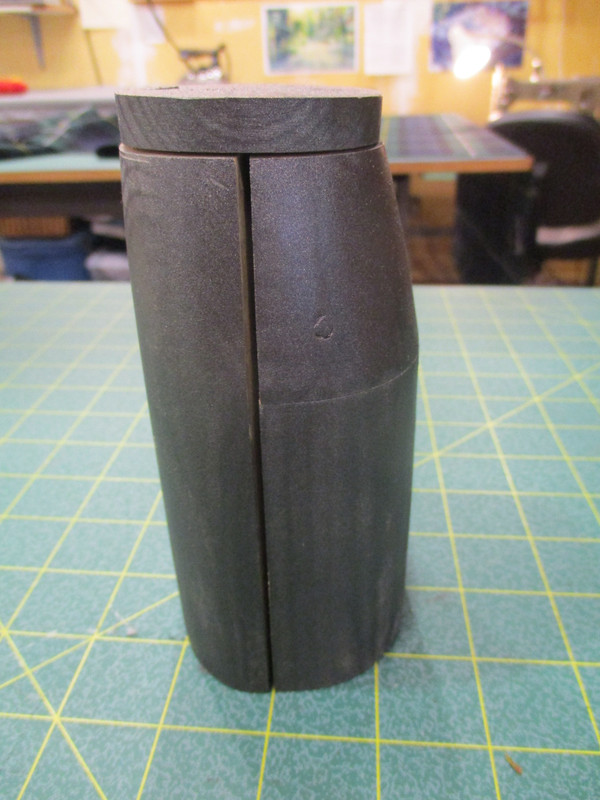
You can see that the front apron falls straight down from the belly.
You can see The Rise.
And you can see the Fell Area where the only shaping of the entire garment is done.
And you can see the pleated section falling straight down from the bottom of the Fell Area to the Selvedge edge.
Where the Bottom of the Fell Area falls is perhaps one of the most important parts of the Traditional Style kilts. If the waist of the kilt is worn lower than where it was designed to be worn, the bottom of the Fell Area drops below the level of the hips and the pleats will form large, shower curtain folds. (In this photo the bottom of the Fell Area is so low that the wearer ended up sitting on the tapered pleats causing the stitching to fail.)

Instead of a smooth, unbroken appearance.
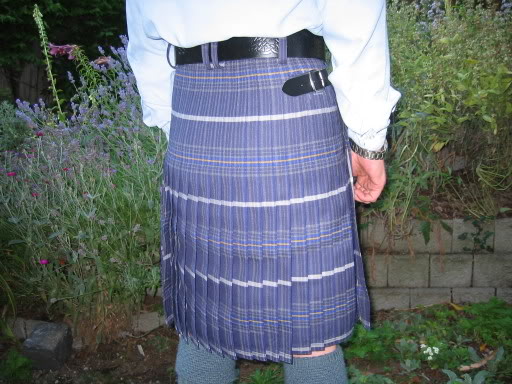
Wearing a kilt with the waist below where it was designed to be worn is what causes the so often seen bottom selvedge edge falling below the top of the knee cap.

The second statement that does not apply to all kilts is -
"I know kilts flare out like an A-line skirt"
Yes, the front apron has an amount of flare built into it. It is wider at the hip line than at the waist. That taper continues down to the Selvedge Edge in a gentle curve.
But a well made kilt, worn as it was designed to be worn, should fall straight down from the hips with no "A-Line Skirt" shape. The apron taper is only to account for the difference between the circumference of the waist and the circumference of the hips in a flat piece of fabric.
The taper continues down to the Selvedge Edge to allow the edges of the apron to gently curve around to the sides of the legs, and fall straight down at about where the side seam of trousers would be.
A poorly made or poorly worn kilt will often cause the apron taper to gape open, and flip outward.
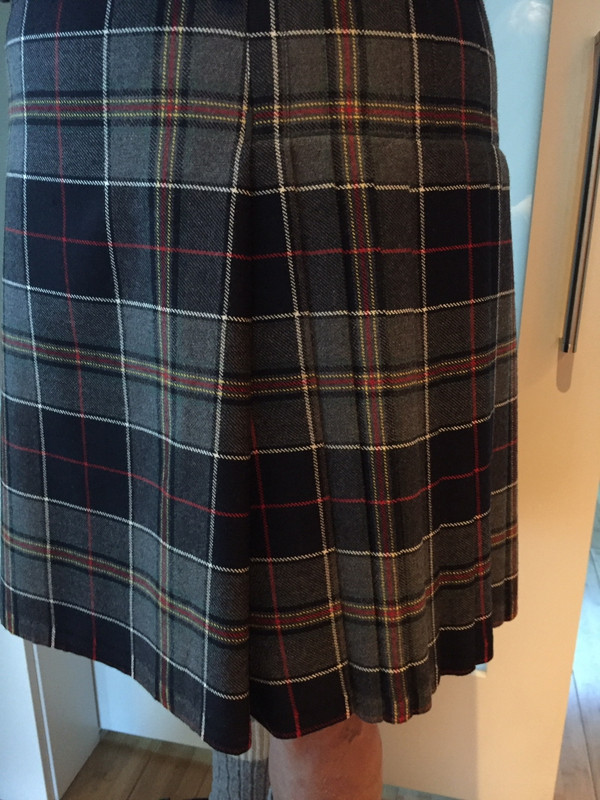
It will also cause the pleats to splay outward into the "A-Line Skirt" shape.
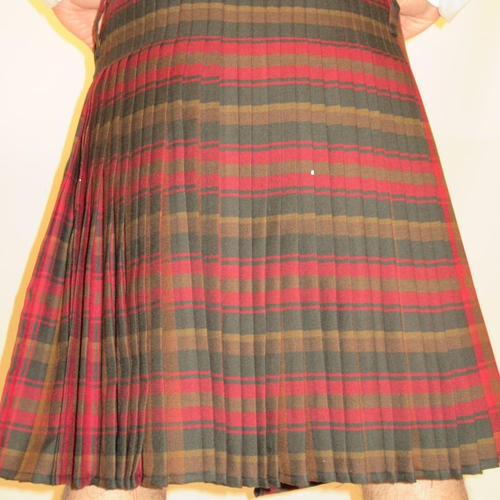
A well made kilt, worn the way it was designed to be worn, should show none of these unsightly characteristics.
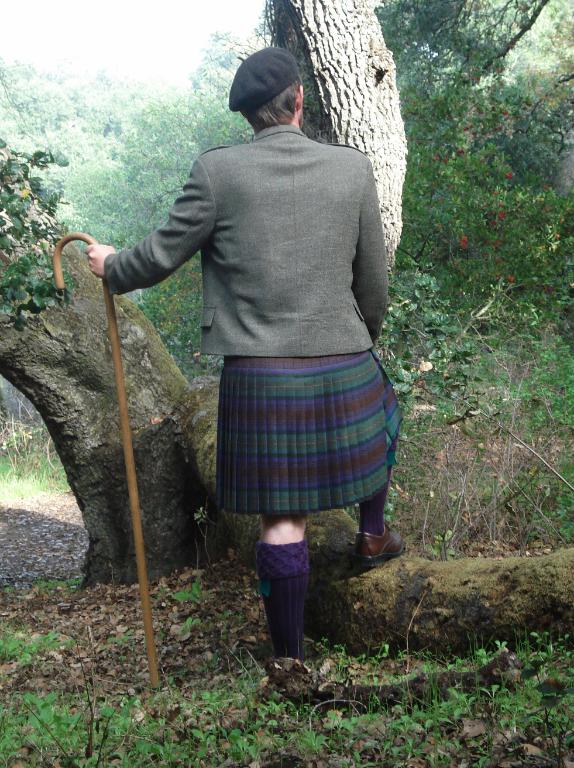
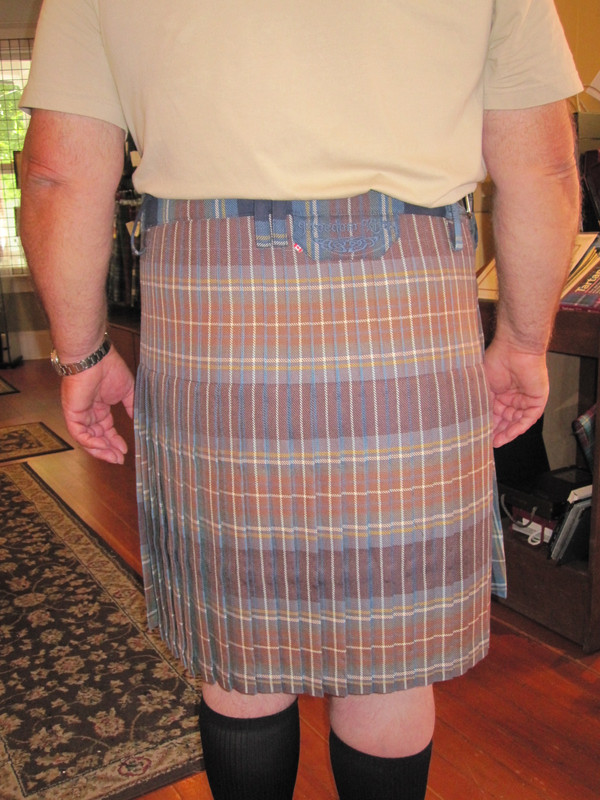
And finally to the length of the kilt relative to the leg length of the wearer. A guys leg from hip to knee has a bone in it. The Femur. The length of his leg cannot change. So the length of his kilt will be the same as the length of his thigh and also will not change.
Even if the waist of the kilt is constructed to be worn at different heights the length from the bottom of the Fell Area down to the Selvedge Edge will be the same.
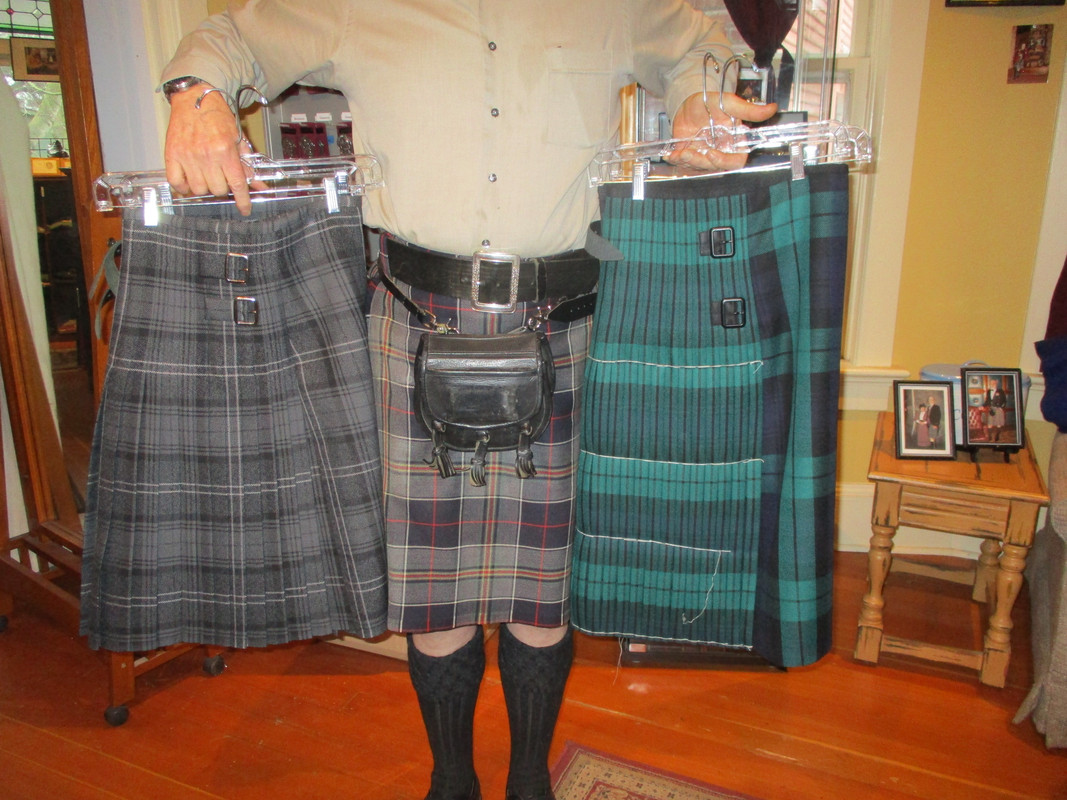
And the Selvedge Edge will hit the same place on his knee cap. If made IAW (In Accordance With) TAoK (The Art of Kiltmaking) the bottom Selvedge Edge will hit at the top of the knee cap. (It is quite often seen as below the knee cap but this is only due to the angle of the camera)
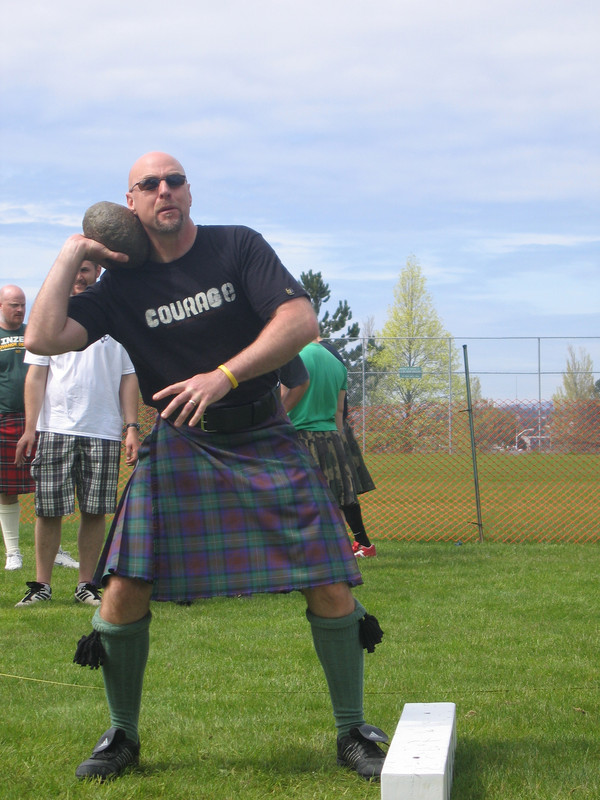
I hope this helps to clear up any misunderstanding.
Last edited by Steve Ashton; 30th October 21 at 08:01 PM.
-
The Following User Says 'Aye' to Steve Ashton For This Useful Post:
 Posting Permissions
Posting Permissions
- You may not post new threads
- You may not post replies
- You may not post attachments
- You may not edit your posts
-
Forum Rules
|
|
Bookmarks